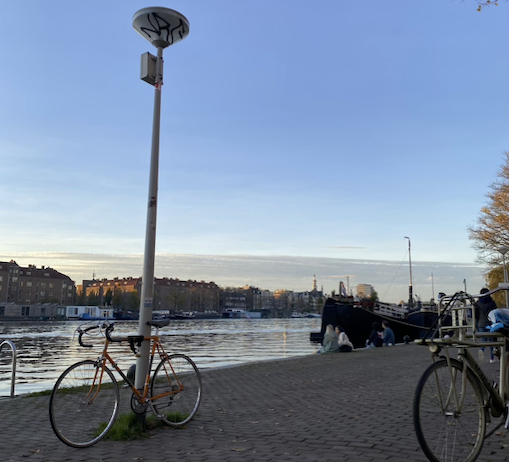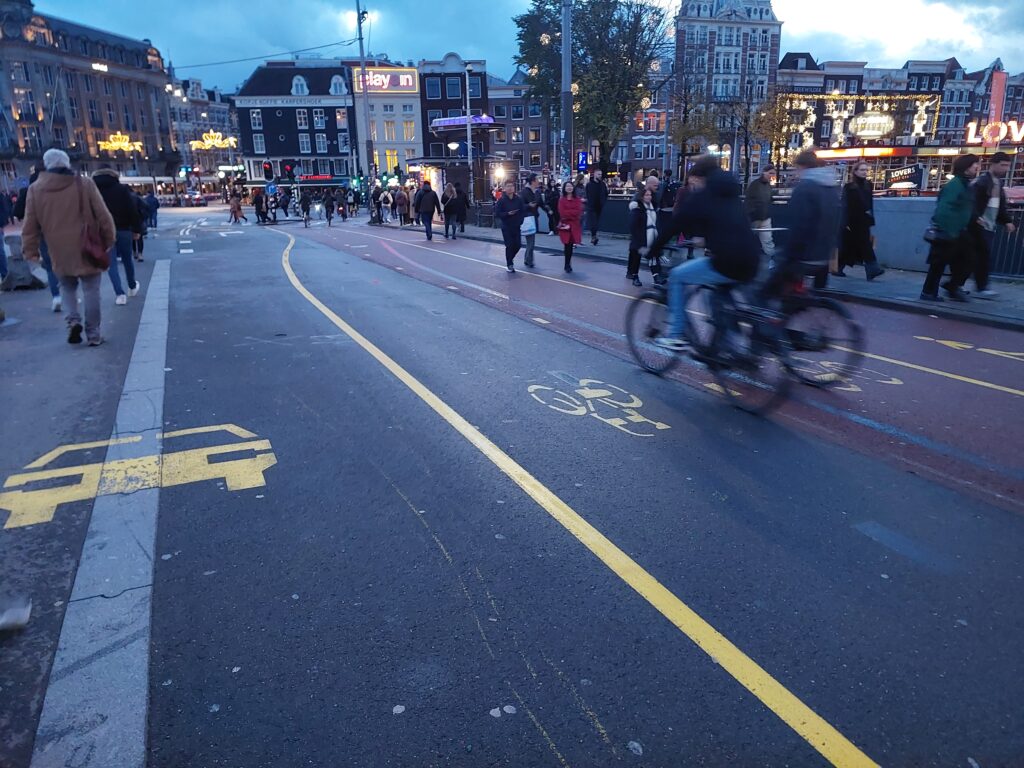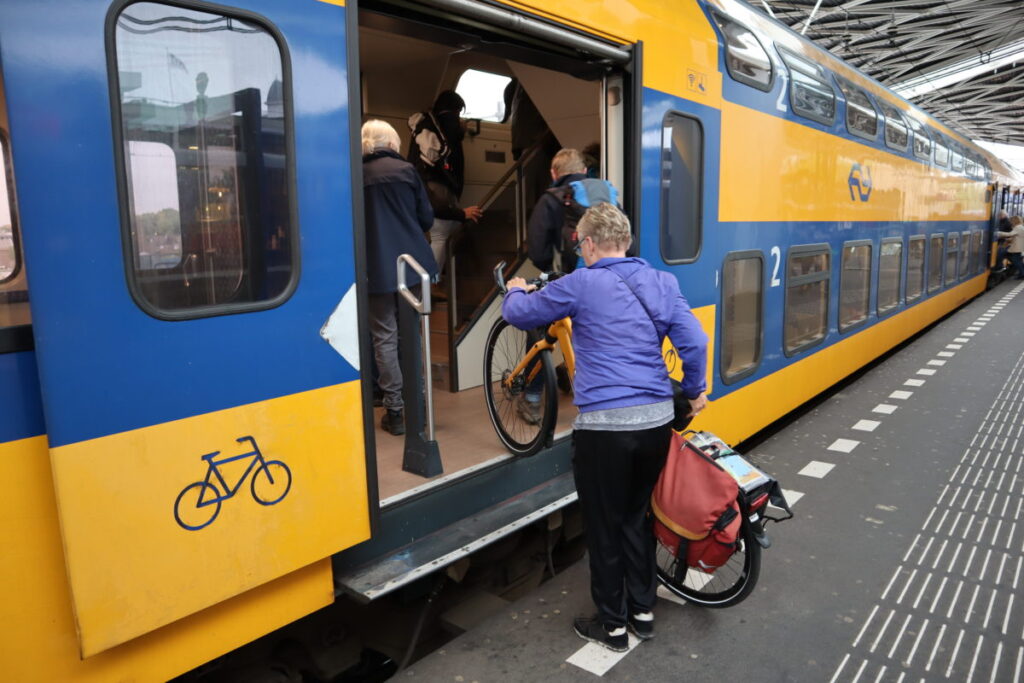Nicolás | LinkedIn
Selected final essay, published 19th May 2023
Nicolás is an Architect from University of Buenos Aires with a Master’s Degree in Urban Planning and Sustainability and a Postgraduate degree in Smart Cities, both from Universitat Politécnica de Catalunya. He is passionate about fostering innovation, technology and sustainability to improve the way we live in cities.
Unravelling the Cycling City MOOC on Coursera
In recent years, Barcelona has become a benchmark in Smart Cities and Urban Mobility. The number of bicycle lanes grew, parking spots for cars in public spaces decreased and the BICING (public bicycle system) improved in quality, quantity and coverage of the city.
In this essay I analysed the content of the course and compared it to Barcelona. The outcome is composed by two solutions, one for the improvement of the cycling experience in the core city and other for the improvement of the commute from the suburbs to the city, both solutions are inspired by the cycling experiences of the Dutch cities.
Let’s start with the comparison of modal splits:

The percentages of trips made by private car are similar and the ones of public transport is higher in Barcelona, but the main difference is in the non-motorized trips, with the bicycles predominant in Amsterdam and walking in Barcelona.

Diving into the modal split composition we identify that the main problem is in the trips between the Metropolitan Area and the core city of Barcelona and that intermodal travel is not exploited. Also, one of the objectives of the new Urban Mobility Plan of Barcelona for 2024 is to reduce 25% the private car share and improve the cycling share up to 5%.
First solution: How to improve mobility between suburbs and the core city?
The Metropolitan Area of Barcelona is made up of a nucleus of urban continuum formed by the Barcelona City Council and a few nearby municipalities, and then it’s expanded with small cities distributed throughout the territory in a similar way to what Lucas Harms describes as an extensive network of small towns that build Amsterdam (Harms, L. et al. 2014).

A possible proposal would be to emulate the mechanisms of a train-bicycle system to compete with the car in inter-municipal journeys. (Kager, R. & Harms, L., 2017), therefore, if policies are developed to promote the combined use of bicycles and trains, bicycle parking is provided at stations, the quality and frequency of trains is improved , and we could even think about supporting small shared bike microsystems, we would form an integrated network of nodes that each serve people in a range of 5km (20 minutes at 15 km/h), and all together could generate a great impact on how people choose to commute with much less impact than having to develop a new and elaborate transit system.
“This is scalable to cater for urban mobility needs while sustainable and compatible with attractive streets and public space. It is the combination of two opposite yet synergistic transport modes: a) rapid mass transit for efficient, concentrated travel flows on the long hauls and b) walking and cycling for flexible movement of diffuse flows on short distances. Both modes are scalable, sustainable and don’t impair high quality public space. (…) Where the transit system acts as a natural extension of the cycling system, offering a solution to the action radius problem of cycling.”
Kager & Harms 2017 p.6
To test whether the existing rail network will be sufficient to cover the urban areas of the Metropolitan Areas of Barcelona, all the stations of the road network were reconsidered and the land was differentiated between urban and non-urban. After that, a 3 km buffer of all stations was made, the recommended 5 km were not even necessary (Kager & Harms, 2017). It has been proven that if the rail service is optimized, bicycle parking spaces are added in stations and a bicycle-train system is promoted, Barcelona could compete with the car in metropolitan journeys without even building new stations.

Second solution: How to promote cycling and force modal change from car to bicycle?
The second analysis refers to the infrastructure in the city centre. We start with the question: Is a cyclist more like a smaller/slower driver or a faster/taller pedestrian? (Forsyth and Krizek, 2011). Barcelona has examples of both forms of planning. There are well-designed areas such as Superillas and some avenues where the cyclist’s experience is great and safe. But there are others where cycling is a nightmare.

These are some examples of considering the bicycle as a slower car driver. Narrow roads embedded between unprotected motorized traffic, bike lanes that coincide with ditches and expose the cyclist to the accumulation of water, forcing him to drive on a sloping surface, and blocking any possibility of social interaction while riding a bicycle (Why We Cycle, 2020).
Catalonia already has a Manual for the Design of Bike Paths, which specifies that the width of a bike lane in an urban area must be at least 1.5 meters in each direction, but in practice this is not fulfilled and it is common to see that most are built with a minimum width that only allows one bike to pass at a time.
In addition, in the 2019 Annual Bicycle Survey, the complaint of the people focused on the lack of safety and comfort when riding a bicycle in the city.

The phrase “carrot and stick” is a metaphor for using a combination of reward and punishment to induce a desired behaviour. Barcelona is doing well on “stick” policies to discourage car travel with Superillas, Zones 30 and reducing parking in public spaces, but not so well on “carrots”. As we saw in previous examples, to promote cycling we must provide a well-designed experience for the cyclist, we must include the heuristic approach of pattern language (te Brömmelstroet, et al., 2018), a more Dutch likely infrastructure for cycling paths, and include the environmental considerations of the six dimensions of urban design (Forsyth & Krizek, 2011) when we structure a great user experience for cyclist.
Conclusion
The Dutch Cycling City Model is a very inspiring successful case study that encourages us to experiment and dream of its establishment in our cities. However, we have seen that the levels of car use (the least sustainable mobility share) are very similar in both cities and the main difference is in the choice of walking vs cycling, both sustainable ways of move.
Cycling vs Walking are two different sustainable city models, which are related to other urban factors such as climate, social, culture, urban density, access to infrastructure, the function of the ground floor of buildings and the mixture of uses. We could argue about which is the best, but being both sustainable, we must focus on how to make them coexist and mutually encourage to overcome the less sustainable modes.
This leads me to the following questions:
Would the implementation of the Dutch Model in Barcelona have the desired effect of removing car users and taking them to the bicycle, or would it be that most of the “new cyclists” will come from the walking share? What infrastructure and policies do we need? Is the Dutch Cycling model better than the Barcelona Walkable City? Are these models replicable in every city? How do we prevent them from fighting each other and how do we encourage them to complement each other to eliminate the automobile from the city?
Sources
- Ajuntament de Barcelona (2020). Urban Mobility Plan 2024. Dated: 01-12-2020
- AMB (2015). Shapefile with the urban classification of the land of the Metropolitan Area of Barcelona provided by the PGM. Dated: 12-01-2015. Available at: http://www.amb.cat/amb-maps/prga_1976_ETRS89.zip
- Autoritat del Transport Metropolità -ATM (2020). Enquesta de Mobilitat en Dia Feiner (EMEF). Date: June 2020
- Direcció General d’Infraestructures de Mobilitat Terrestre. Departament de Territori i Sostenibilidad de la Generalitat de Catalunya (2018). Shapefile of the Railway Station Network. Dated: 16-04-2018.
- Forsyth, A., & Krizek, K. (2011). Urban Design: Is there a Distinctive View from the Bicycle? Journal of Urban Design, 16(4), 531–549.
- Generalitat de Catalunya. Departament de Territori i Sostenibilitat (2019). Enquesta Baròmetre de la Bicicleta 2019. Date: 18-12-2019.
- Generalitat de Catalunya (2008). Manual for the design of cyclepaths in Catalonia.
- Gemeente Amsterdam (2015). Long-Term Bicycle Plan 2017-2022. For Cyclists and a Healthy and Accessible City
- Harms, L., Bertolini, L., & te Brömmelstroet, M. (2014). Spatial and social variations in cycling patterns in a mature cycling country exploring differences and trends. Journal of Transport and Health, 1(4), 232–242.
- Kager, R., & Harms, L. (2017). Synergies from improved bicycle-transit integration Towards an integrated urban mobility system. International Transport Forum.
- Te Brömmelstroet, M., Nello-Deakin, S., Quillien, J., & Bhattacharya, I. (2018). Towards a pattern language for cycling environments: merging variables and narratives. Applied Mobilities.
- Why We Cycle (2020). Documentary by Gertjan Hulster, Arne Gielen, Marco te Brömmelstroet, Jeroen Dirks.



